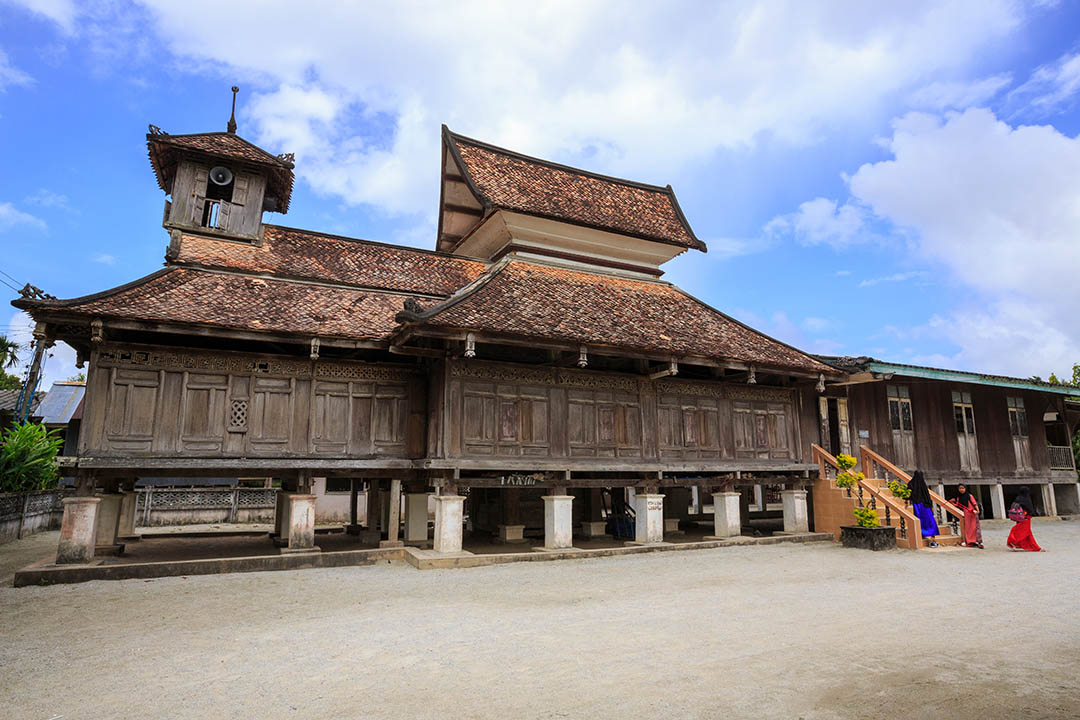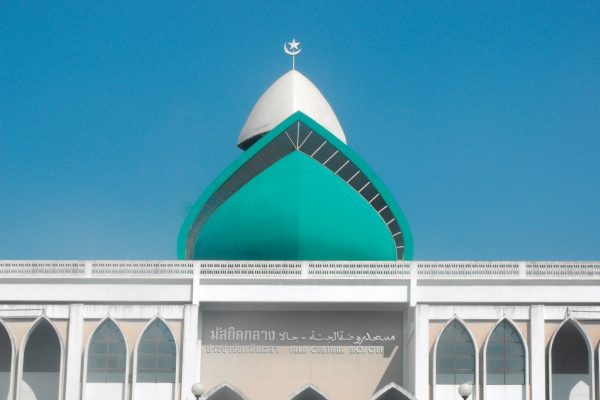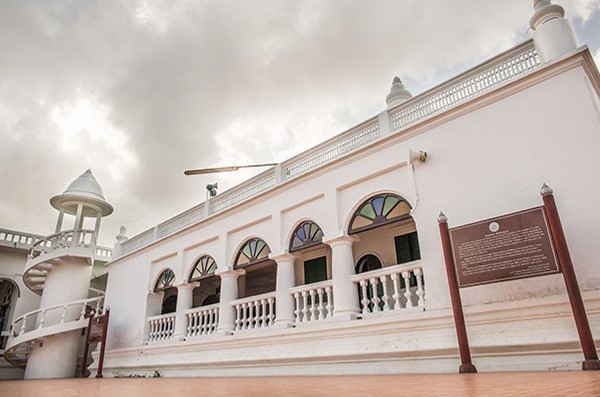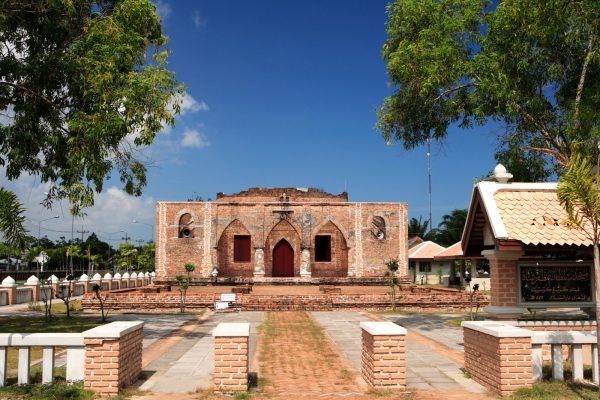
300-year-old Mosque (Taloh-manoh Mosque or Wadil-husen Mosque)
Wadil-husen Mosque or Taloh-manoh Mosque located in Taloh-manoh Village in Subo Sawo Sub-district is 25 kilometeres away from Narathiwat province following the highway 42. It is believed that Wan Hussein As-Sanawi, an immigrant from Sanor Yanya in Pattani province, was built the mosque in 1624. At first, the mosque’s roof was covered with palm leaves, then the material was changed to ceramic tiles. The mosque itself consists of two adjacent buildings built in a mixture of local Thai, Chinese, and Malay architectural styles. Instead of using nails and screws, the whole mosque was traditionally built using old building tools such as Malarbar ironwood (a local timber known as Mai Takien) and wooden bolts and pins combining perfectly the architectural style of Thai, Chinese and Malay. The highlight of the building is the Chinese-style roof and Malay-style roof composing of three tiers. The floor is two inches thick and window shutters are of solid wood boards. The wall is in Thai traditional style made from wood. The windows are designed in different patterns including tree leaves, flowers and Chinese pattern blending altogether proportionally. In addition, this Chinese minaret is the buildings three-tiered roof where the Imam prays constructed from wooden poles. In the past, Taloh-manoh Village functioned as the minaret or tower where people were called from at prayer times. Next to the mosque is a Muslim graveyard. Rocks decorating the grave of deceased males will be round, while those for females would be half buried, with only half of the rock visible above ground. Visitors can see the outside area of the mosque; however, those wishing to see the interior are required to receive permission from the Imam village. The mosque is open daily with no entrance fee from 08.00-18.00.



